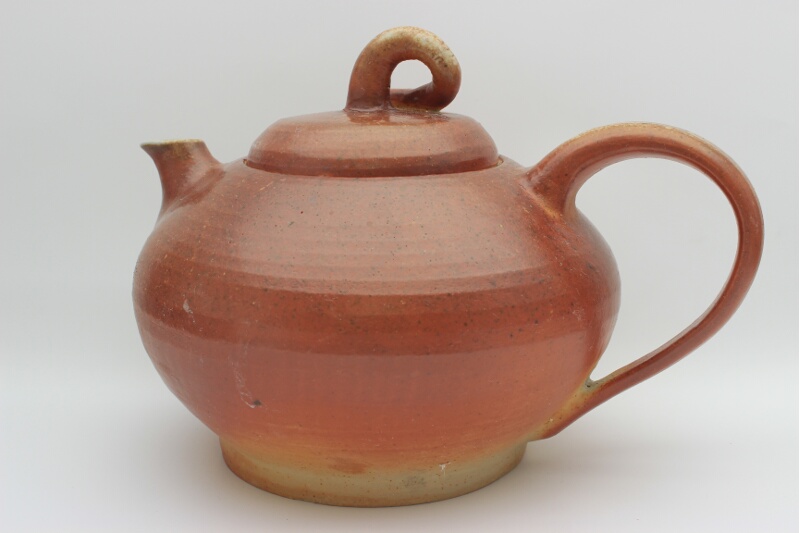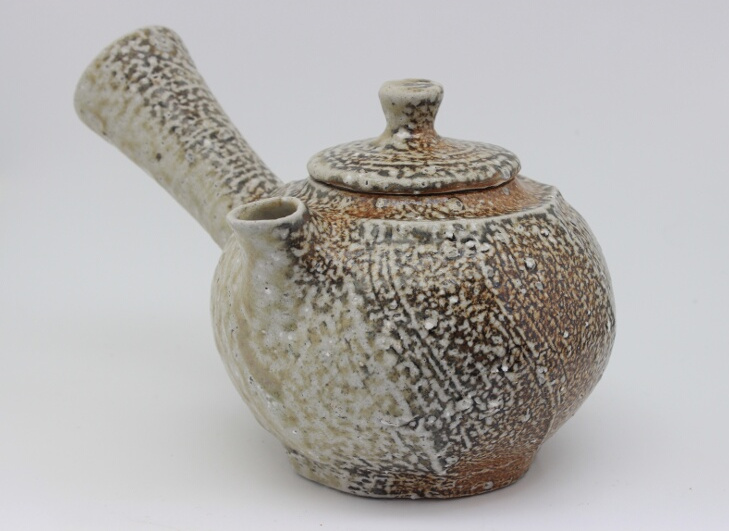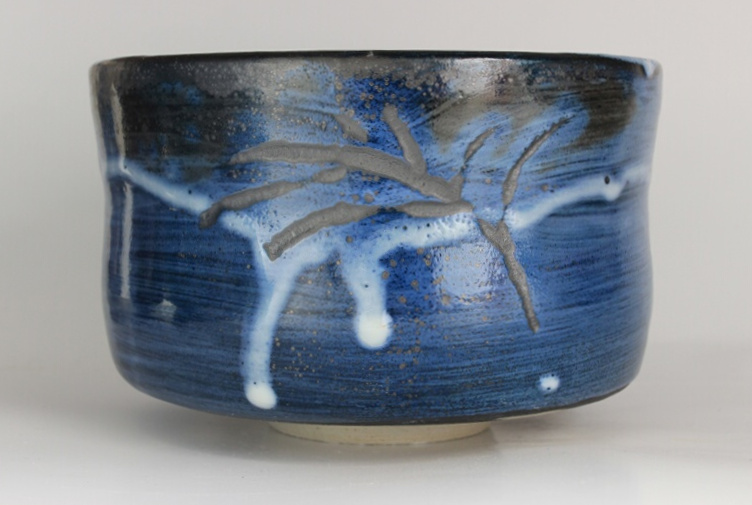Tea has found its way since centuries into many cultures, very often with a religious or philosophical context. In the spirit of WabiSabi philosophy, now the sensory impression, the flavor, must add harmony to the other components. Shape and characteristics of the tea pot, the tea bowl and the tea itself must be aligned with each other to connect the ideal flavor experience with the aesthetic sensation.
 English Tea (black tea) is normally only brewed once and is characterized by its strong taste. The tea pot requires a strong wall and a distinct foot to preserve the heat of the tea, as the tea is consumed over a relatively long period of time. The handle/grips are far away from the pot body to protect the holding hand. Typical tea pot contents vary between 0,75l and 1,5l.
English Tea (black tea) is normally only brewed once and is characterized by its strong taste. The tea pot requires a strong wall and a distinct foot to preserve the heat of the tea, as the tea is consumed over a relatively long period of time. The handle/grips are far away from the pot body to protect the holding hand. Typical tea pot contents vary between 0,75l and 1,5l.
Recommendation: Cylon tea, Darjeeling, Assam, Earl Grey, Golden Broken Orange Pekoe

Japanese green tea is brewed one or few times and is let set to steep only a short time. The tea pot should have a lateral grip (watch for right hand and left hand versions). The lateral grip ensures, that the tea pot can be emptied completely between the individual brewings. If the tea leafs are left in liquid, bitter substances are dissolved. The tea pots require no thick walls, as the hot tea stays only a short time in the pot. As the tea pot is emptied after each brew completely, a pot content of 0,4 – 0,5l is sufficient.
Two special tea pot shapes in Japan (and China) are called Hohin and Shiboridashi. A Hohin tea pot has no grip but one hand is holding the pot on it´s wide outer rim. The spout is cut open. Shiboridashi pots are even simpler, the tea sieve is part of the pot´s gallery.
Recommendation: Sencha (cha is the general Japanese word for tea), Bancha, Gyokura, Genmaicha (with roasted rice) und Matcha (for the tea ceremony).
 Chinese tea (white non-fermented tea, green tea, red Oolong tea and black Puerh tea) of good quality can be brewed up to 7 times and let set to steep a little longer with each brew. Besides pots with a lateral handle also tiny tea pots in traditional shapes are used. The tea pots should be stored between the brewings spout-down in a tea bowl. The content of the tea pot is sufficient for 2 small tea bowls, this would be about 250-300ml.
Chinese tea (white non-fermented tea, green tea, red Oolong tea and black Puerh tea) of good quality can be brewed up to 7 times and let set to steep a little longer with each brew. Besides pots with a lateral handle also tiny tea pots in traditional shapes are used. The tea pots should be stored between the brewings spout-down in a tea bowl. The content of the tea pot is sufficient for 2 small tea bowls, this would be about 250-300ml.
Recommendation: Peony and Silver Needle (white), Dragon Well, Biluochun and Jasmin tea (green), Ti Kwun Yin, Da Hong Pao (Oolong), Puerh is sold in tiles, sorted by the year.

A very special group of tea ceramics are the tea bowls (Chawan) for a tea ceremony. This bowls underlie a lot of rules that are partially of a practical nature like a smooth inside to protect the tea whisk, a high foot ring to hold the bowl with one hand during cleaning, a winter and a summer shape that keep the tea either warm or let it cool faster. Other rules are deeply connected to the tea ceremony and can only be understood if the ceremony itself is understood. A good example would be the interesting surface of the pot´s outside that must be admired excessively during the ceremony.
Recommendation: Matcha (ground green tea).